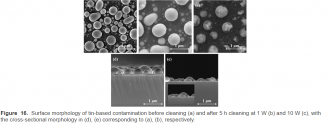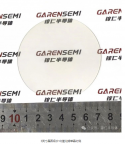Investigation of an electrode-driven hydrogen plasma method for in situ cleaning of tin-based contamination.
1.Key Laboratory of Radiation Physics and Technology, Ministry of Education, Institute of Nuclear Science and Technology, Sichuan
2.Institute of Atomic and Molecular Physics, Sichuan University,
3.Institute of High Performance Scientific Computation, Xihua University,
4.School of Engineering Science, University of Chinese Academy of Sciences,
Abstract
To prolong the service life of optics, the feasibility of in situ cleaning of the multilayer mirror (MLM) of tin and its oxidized contamination was investigated using hydrogen plasma at different power levels. Granular tin-based contamination consisting of micro- and macroparticles was deposited on silicon via physical vapor deposition (PVD). The electrode-driven hydrogen plasma at different power levels was systematically diagnosed using a Langmuir probe and a retarding field ion energy analyzer (RFEA). Moreover, the magnitude of the self-biasing voltage was measured at different power levels, and the peak ion energy was corrected for the difference between the RFEA measurements and the self-biasing voltage (RFEA−self). XPS analysis of O 1s and Sn 3d peaks demonstrated the chemical reduction process after 1 W cleaning. Analysis of surface and cross-section morphology revealed that holes emerged on the upper part of the macroparticles while its bottom remained smooth. Hills and folds appeared on the upper part of the microparticles, confirming the top-down cleaning mode with hydrogen plasma. This study provides an in situ electrode-driven hydrogen plasma etching process for tin-based contamination and will provide meaningful guidance for understanding the chemical mechanism of reduction and etching.



